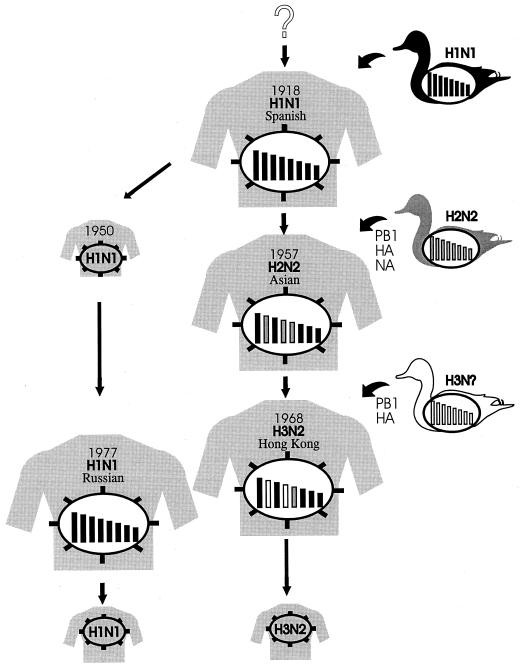FIG. 4.
Possible origins of pandemic influenza viruses. Phylogenetic studies suggest that an avian influenza virus was transmitted to humans, leading to the 1918 pandemic. A reassortant virus possessing its PB1, HA, and NA genes from a Eurasian avian virus, with the remainder coming from an H1N1 human virus, caused the Asian pandemic of 1957. The H1N1 virus subsequently disappeared from humans. In 1968, a reassortant possessing its PB1 and HA genes from a Eurasian avian virus and the remainder from an H2N2 human virus emerged, followed by the disappearance of the H2N2 virus. In 1977, a virus genetically almost identical to those circulating in humans in 1950 appeared and spread among children and young adults. The H1N1 and H3N2 viruses are now cocirculating in humans.

